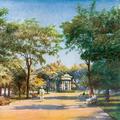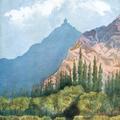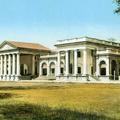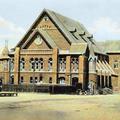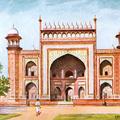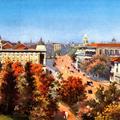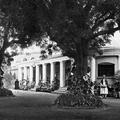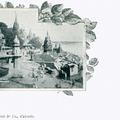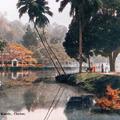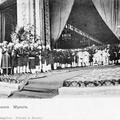Bombay. A Peep into the Victoria Gardens.
[Original caption] A Peep into into the Victoria Gardens. These beautifully laid out gardens are a source of pleasure to the weary and jaded worker in the cool of the evening after a hard days work in the broiling sun and stuff offices. [end]
The

